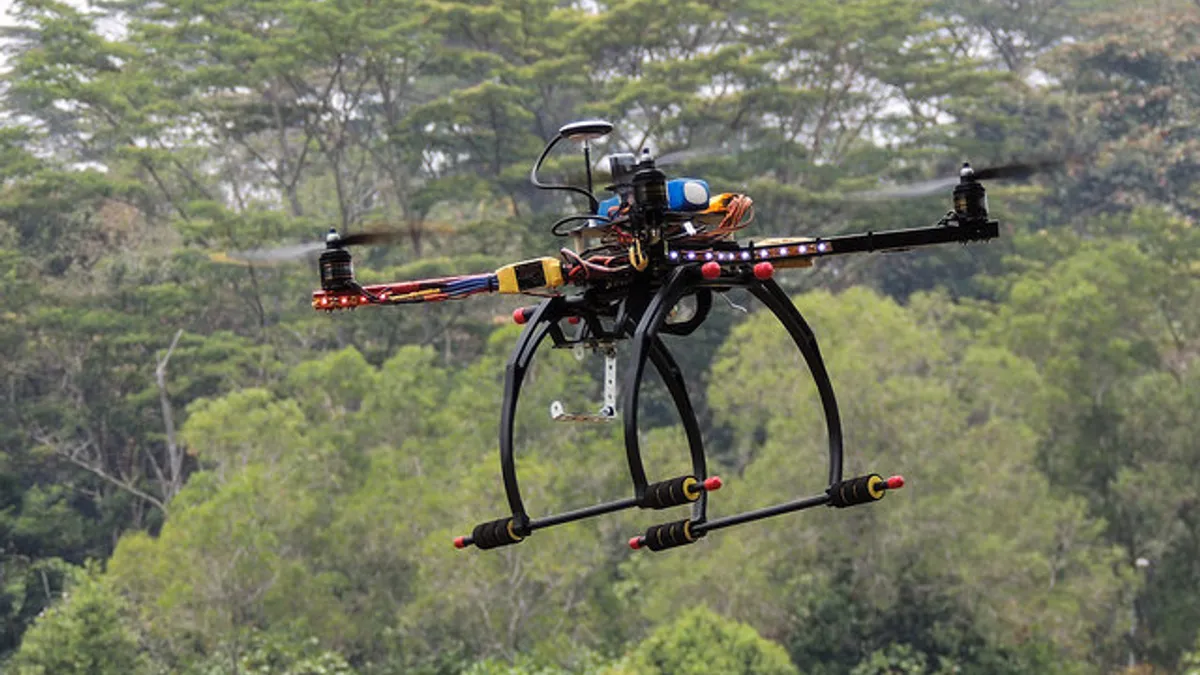Dive Brief:
- A presidential directive establishing a plan for testing new regulatory initiatives for unmanned aircraft systems (UAS), as well as permitting UAS into a wider airspace, and which could include package-delivery services was announced Wednesday, the Wall Street Journal reported.
- Within the next 12 months, the Federal Aviation Administration and the Transportation Department should be joining forces with both operators and local officials to determine ideal locations for testing air-traffic management networks. Potential test sites would share oversight between federal agencies and state, local or tribal governments.
- Detect and avoid systems, along with cyber security, are two of the capabilities for which the drones will be tested. The goals of the tests are expected to lead to promoting innovation and economic development; enhancing transportation safety; enhancing workplace safety; improving emergency response and search and rescue functions; and using radio spectrum efficiently and competitively.
Dive Insight:
The game of drones continues.
As the slow progression toward commercial approval drones on, so do conflicting views on the technology. The FAA insists the skies will be filled with drones by 2021, while a study by Materials Handling and Logistics argues that turnaround time for the flying machines remains highly problematic. Further, no less an industry insider than Gartner recently referred to UAS as having peaked, dwelling now in a "trough of disillusionment."
Will drones finally come into their own, now that the White House has approved testing for a greater range of usage parameters? It seems that UAS will forever remain the technology that got away, especially in light of the fact that while useful in some applications, few are commercial in the sense of delivery options. Furthermore, a study released in June found that trucks actually leave a smaller carbon footprint when making multiple delivery stops.
What's likely is that drones will continue in their present very specific usage pattern: indoors at distribution centers, or outdoors eyeballing difficult to reach locations. Though it's certainly possible that the pending research will resolve many of the ongoing problems with drones, it's not something we can bet on.













